
Be a Land Steward.
Sign up for Greenhouse Gases -
a weekly-ish newsletter that will teach you the science behind regenerative gardening, with action steps to help you make a difference in your backyard.

Sign up for Greenhouse Gases -
a weekly-ish newsletter that will teach you the science behind regenerative gardening, with action steps to help you make a difference in your backyard.
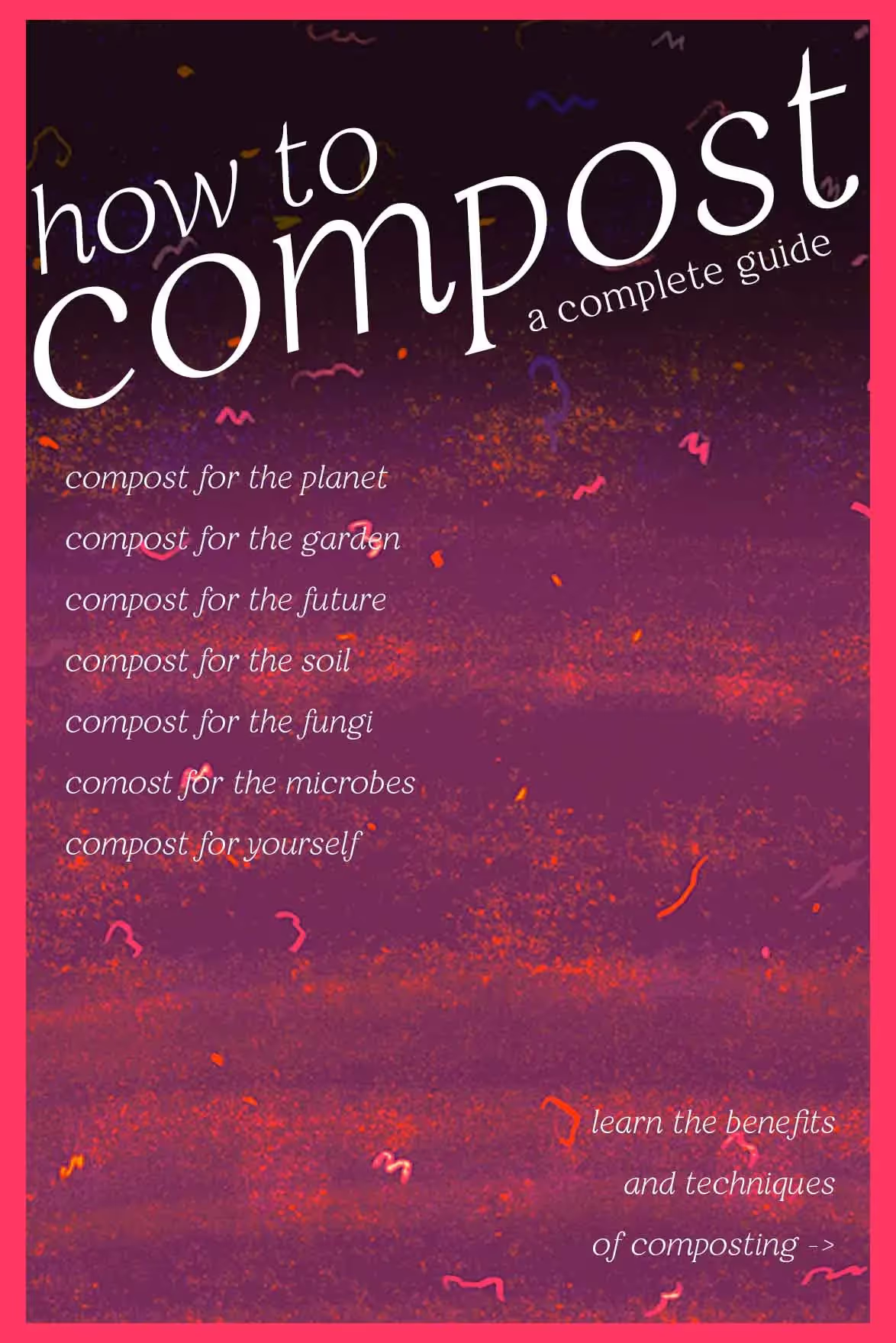
Compost is the result of microbiota breaking down organic materials, such as food scraps, grass clippings, and leaves. As the raw material gets digested and excreted, it becomes transformed into a nutritional and beneficial soil amendment for your garden.
Adding compost increases the organic matter in your garden, and feeds microbes and fungi at the same time. The microbes and fungi in the compost help make nutrients available to your plants.
This means that adding compost to your soil increases soil health by attracting the soil food web into your garden.
Compost creates a healthy ratio of soil material, which can help balance out clay or sandy-leaning soils into a more robust loam. The nutrients in the compost reduce the need for fertilizer and pesticide application, and increase carbon organic matter in the soil (source).
Complete compost guide table of contents:
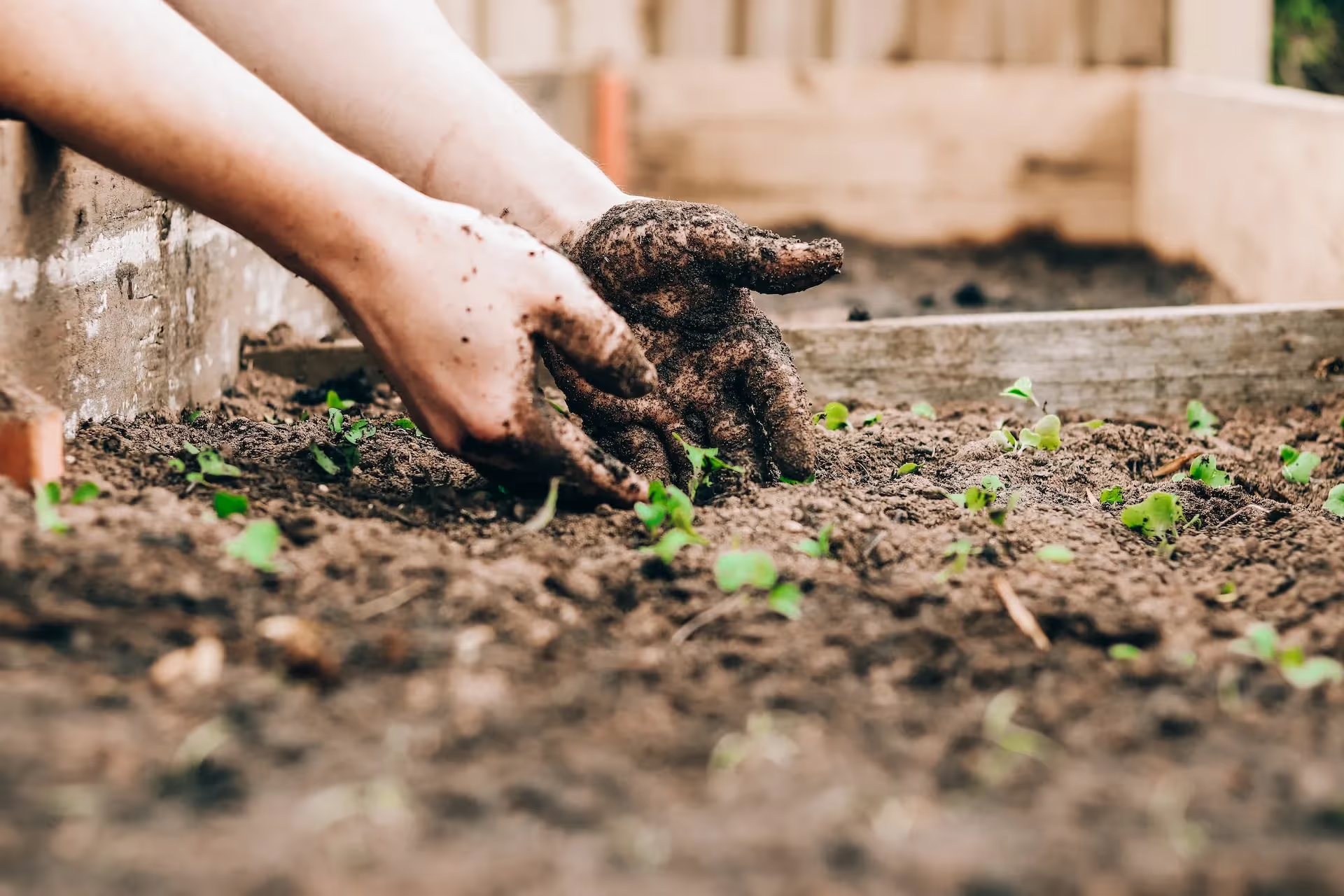
In addition to being gardener’s gold in terms of building soil fertility and structure, the act of composting in your backyard has fantastic environmental benefits.
The environmental benefits of composting our waste makes it one of the most important ways you can contribute to the fight against climate change.
Currently, green waste (such as food) is biggest waste category on earth, making up 44% of global waste (source).
This green waste contributes to climate change. When green waste ends up in the landfill, it doesn’t go through the same process as when it’s composted. Instead, as the material breaks down, it emits potent greenhouse gases such as nitrous oxide and methane, which are [300] and [25] times more potent than CO2, respectively (source).
In total, 9.2 bn tonnes of CO2e emissions each year can be attributed to global food waste. To put that into perspective, that’s equivalent to the overall CO2e emissions from the US and the EU put together (source).
With total global CO2e emissions topping the charts at [50 bn tonnes], that means food waste alone contributes to 18% of total CO2e emissions each year.
If we can all get on board with composting, whether in our backyard, balcony, or by contributing to municipal compost*, the better it will be for the planet - even if you don’t have a garden!*
According to Project Drawdown, when we compost our food waste instead of toss it in the landfill, we can reduce CO2e emissions of food waste by 50%.
Some sources say the reduction could be as much as 75%, and then we have the added bonus that comes from adding carbon to our gardens - more potential for carbon sequestration, less need for fertilizers, and added tilth to the soil.
Anytime waste decomposes - whether in the compost bin or in the landfill, some form of greenhouse gas, such as carbon dioxide, nitrous oxide, and/or methane is released
The difference in carbon equivalent emissions between composting and the landfill, though, is significant.
This is because, according to the Dept of Primary Industries & Regional Development's Agriculture and Food Division, the aerobic factor of composting helps to greatly reduce methane formation while the compost pile is breaking down. The aerobic factor is due to the presence of oxygen in the compost pile.
When organic material is in a bag in a pile at the landfill, the breakdown process happens without oxygen, and that causes methane formation.
Methane is more problematic than carbon dioxide, as it is 26 times more potent in terms of its atmospheric warming potential, so any way we can reduce methane emissions is of great benefit to the environment.
The Ag + Food Division shares that the microbes that produce methane won’t be at work when oxygen is integrated into the waste pile, so the more we can turn our compost piles and keep it aerobic, the better it is for the environment.
In short, YES!
The environmental benefits of making compost paired with the environmental benefits of applying it to your soil makes composting a huge asset to your garden or homestead.
As we briefly mentioned earlier, applying compost to the garden extends the environmental benefit of composting beyond methane reduction.
In fact, compost has the ability to enhance the carbon sequestration potential of our gardens and agricultural lands. The Marin Carbon Project in California discovered that even a single dose of compost on soil creates a domino effect of carbon sequestration that can continue for over ten years. This is because, as UCLA notes, compost is a microbe-rich supplement to the soil, and it’s those microbes that sequester the carbon in the soil as photosynthesis takes place.
What’s more is that, as a study from the University of California Davis found, the combination of compost applications alongside cover cropping systems increased the soil carbon amounts by 12.6% over a 19 year period. This study sampled soils 6 feet down in the soil and not on the surface level to get more concrete and stable results. They think that compost contributed enough microbes to stabilize the carbon sequestered by the cover crops, and so the combination of practices was extremely beneficial.
According to Calrecycle, a government-run program in California, the Marin Carbon project also documented that when applied to forage crops, the yields and quality of the crop increased. Native plants also benefited in health with the application of compost.
Furthermore, compost can help reduce the input needed in gardens, homesteads, and agricultural land. According to UCLA’s Institute of the Environment and Sustinability, soil that has had a compost application is better able to hold water, meaning less stress on watersheds and wells.
Fertilizer needs also decrease with the application of compost, as the microbes help to make soil nutrients more readily available to the plants. Synthetic fertilizers have a high carbon footprint because they are typically made from petrochemicals. The manufacturing process utilizes fossil fuels, and then there’s transportation of the end product. Finally, in agricultural situations, diesel is needed for the tractors that spread the fertilizer (source).
Since inorganic nitrogen fertilizer is a huge contributor to the agricultural sector’s CO2e emissions, any way that we can reduce the use of this chemical has a positive overall impact.
Synthetic nitrogen fertilizers alone account for 2% of global GHG emissions. To put this into perspective, that’s the same amount released from commercial aircraft.
Moreover, synthetic nitrogen fertilizers emit nitrous oxide, which is 265 more potent than carbon dioxide (source).
A study from 2013 found that compost actually helps plants to grow more roots than synthetic nitrogen fertilizer, which in turn sequesters more carbon.
Compost is an excellent organic mulch option for gardeners. It is rich in nutrients and helps to improve soil fertility. To apply compost as a mulch, spread a layer around your plants, or top off a bed with some compost before planting into it.
In addition to helping to build soil fertility and texture and topping up beds, compost also assists your plants with a little nutrition. Let’s look at compost as a fertilizer next.
According to the University of Amherst, an average compost has an NPK value of 1-1-1. This is an estimate, since how the compost was made and what was put into it impact the end nutritional result.
While the NPK levels may not be very exciting, there are a plethora other secondary macronutrients and micronutrients to be found in compost. And then we have the microbes!
The Soil Control Lab sampled 1600 different composts made by farmers and gardeners and found an average of:3% calcium | .6% magnesium | 51.5 mg/kg boron | 15321 mg/kg iron
along with amounts of sulfate, copper, zinc, iron, manganese, and molybdenum.
Interestingly, even with small NPK numbers, compost application faired better when compared to inorganic fertilizer in a 3-year study.
The study, from the University of Cape Coast, found that applying compost to crops improved soil health and increased crop yield when compared to inorganic fertilizers, even if the inorganic fertilizer was mixed with biochar.
Moreover, they found that using only inorganic fertilizer made the soil less healthy. They measured soil health by looking at things like how much water the soil can hold, how much air can get into the soil, and how much of different nutrients are in the soil. They also measured how much grain the crops yielded.
Now that you know the scope of environmental benefits of compost, let’s look at the various options and things to know about composting bins. In this section, we will explore the various options and considerations when it comes to composting bins.
Whether you have a spacious backyard or are in an apartment with limited indoor space, there are composting solutions available to fit a plethora of needs.
We’ll cover traditional outdoor compost bins and compact indoor systems, and you’ll be able to choose the right one for your sustainable home.
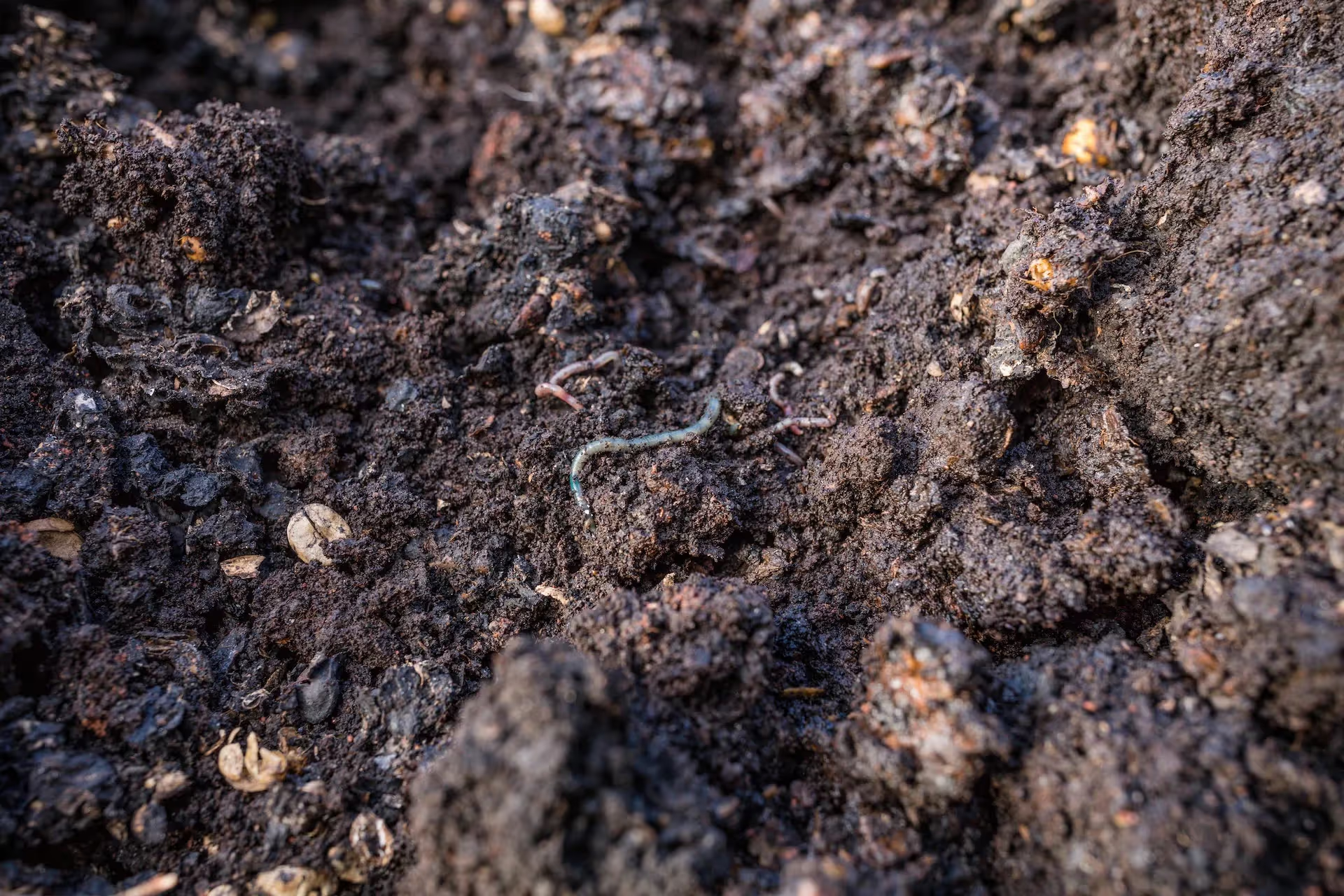
While it might be cumbersome to contain and manage, you don’t actually need a structure to compost outdoors! This method works really well if you have your green and brown materials ready and on hand, and if you have enough to cover an area that is 4 ft x 4 ft. You’d start by placing some sticks and larger browns at the base of the pile, to help with air flow and circulation. then, build layers of greens and browns, one layer on top of the other, until your pile is about 50% of each type of material.
I’d recommend that if you work with a simple compost pile, that you make it no more than 4 feet tall, otherwise you will have a hard time turning it with a pitchfork. You’d be able to make your pile a lot bigger if you have a tractor, however.
Dual Batch Compost Tumbler: made from Recycled black polypropylene and BPA free
Compost Wizard Dual Senior Composter
upsides:This composter is made from recycled materials, and it has a dual chamber system so that you can always have a spot to put your compost, even when one side is full. This is great because by the time you fill up the second side, the first side will be ready for you to apply to your garden, and then you can start over again without any interruption in the composting process.
Since this composter is made from recycled plastic that is BPA free and FDA approved for food contact.
downsides:
If you were hoping to extract compost tea, this might not be the compost bin for you as there are no drain holes for that purpose.
Removing the compost is easiest if done by hand into a bucket or wheelbarrow, shoveling out the compost probably won’t work.
Dual Batch Compost Tumbler with cart: sturdy and practical
Maze Compost Tumbler and Cart Combo
upsides:This compost tumbler is durable and easy to turn, making it something that will be practical and long-lasting in your garden.
An added bonus is that you can work with the tumbler as a single chamber or double, depending on your needs and the amount of material you have at a given time.
With the addition of the cart, it’s easy to scoop finished compost out and deliver it to where you want it in your garden.
downsides:
While this bin is sturdy and built to last, it’s not made from recycled materials.
This compost tumbler should be placed under an awning as reviewers noted that rain water can get into the compost barrel.
Cedar Wood Composter, 23 Cubic Feet
upsides:
Compost bins allow for larger amounts of compost to be made in a smaller footprint when compared to tumblers. Compost bins also give you the advantage of being able to remove finished compost with a shovel as opposed to by hand.
Most compost bins can be made without plastic, which is nice for the environment and for durability.
downsides:
You’ll have to manually turn the pile with a pitchfork every so often in order to get the best results. Most compost bins are not rodent-proof or animal-proof and offer no method for collecting liquid, although liquid can drain easier out of a bin vs. a tumbler.
best compost bin for getting compost tea:
This composter has features that are an answer to the downsides of the other composting bins: There is an internal aerator in this bin, so you don’t need to manually turn the compost yourself. With the lid, creatures are less likely to get into your bin. Additionally, this bin has a drainage nozzle for your compost tea!
While this composter is made from plastic, it might be the solution to harvesting compost leachate that you’re looking for.
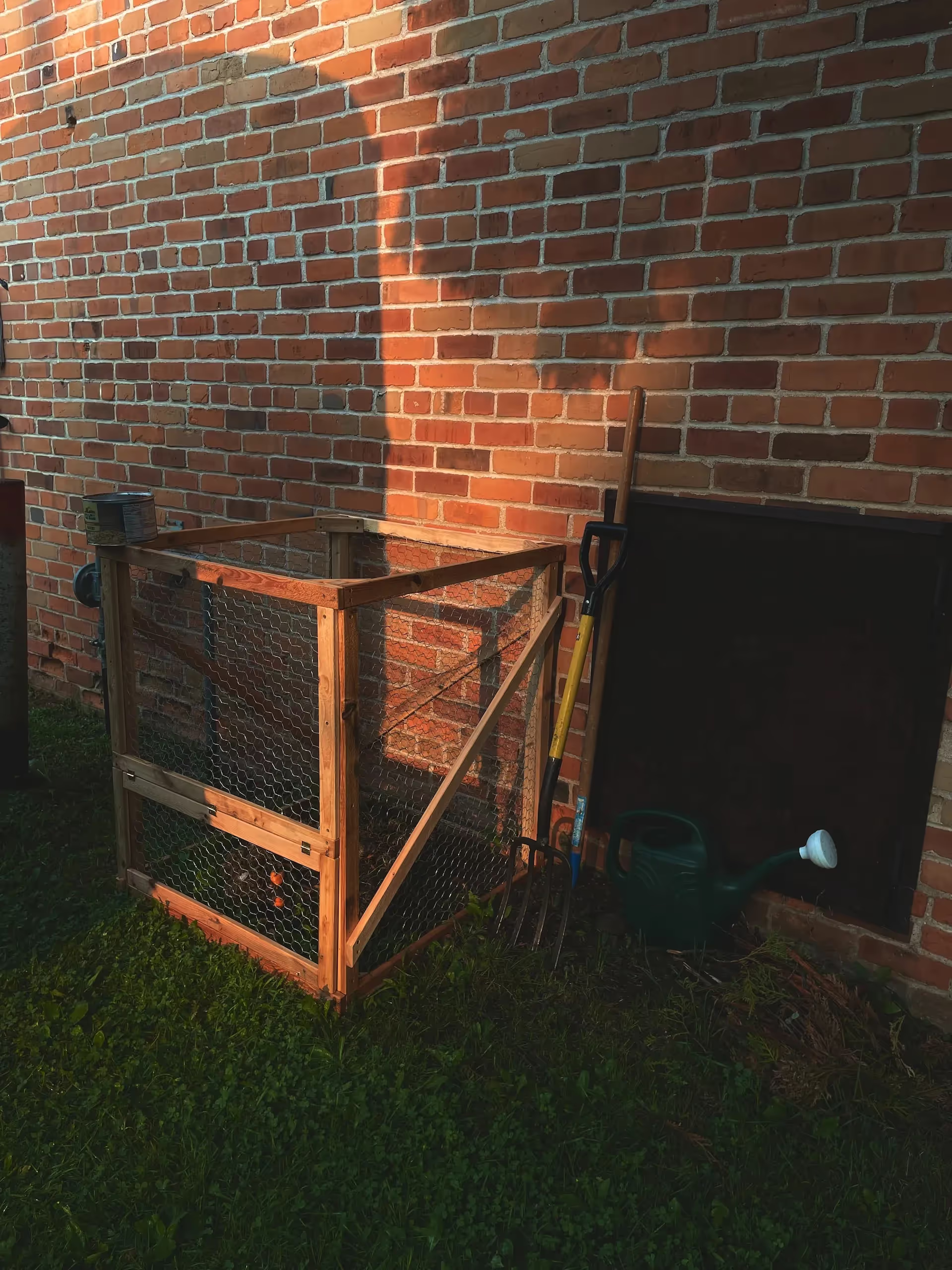
You can easily make a compost bin if you have some untreated lumber. While cedar will last for a long time, any untreated wood will work for your structure.
We prefer to use untreated wood since the compost will eventually come into contact with our food. While newer lumber isn’t treated with arsenic, it’s still treated with copper-derived products and is something that we choose to avoid having in close proximity with anything that will be growing in the garden.
We have found that we can build a less expensive compost bin by making the frame out of 4x4 corner posts, and then wrapping 3 sides of the bin with chicken wire. From there, a few extra pieces of lumber are added as bracing to make the frame more stable. The chicken wire helps with circulation.
You can then build a removable fourth wall for the bin to keep things from spilling out when you are not turning the pile or removing the finished compost. You can make a simple door out of wood and chicken wire and some hinges, or make wooden slats that can slide in and out of the frame.
During the rainy season, we keep our compost bin covered with a tarp to keep the compost at an optimal moisture level.
I would definitely recommend having at least two compost bins, so that when you have filled up one bin, that compost can settle and mature while you start on the second bin.
If you have a homestead or farm, at least two bins are probably necessary with all of the organic material that you will be able to collect on your property.
This section will look at compost bins that actually make compost inside your home or apartment, instead of containers that serve as a compost waste collector before being transported outside to your compost heap.
First, we have the bokashi method of composting in bucket, which offers tons of flexibility in what and where you are able to compost
All Seasons Indoor Composter - Kitchen Compost - SCD Probiotics
While the process of bokashi composting is different from the standard composting process, this is a great way to divert food waste from the landfill and boost the nutrition and health to your plants.
Bokashi is made by adding special microbes and rice bran into a bucket with your food waste. Instead of the microbes that are found outdoors breaking down your organic waste, the bokashi microorganisms are at work here.
The bin linked above is made from plastic, but it doesn’t break down during the composting process, so the chemicals in the plastic won’t leach into your end product. The tan bin is BPA plastic, while the black bin is 75% recycled plastic soda bottles, so you can pick which materials you wan
There are also indoor worm bins, which is more in line with vermicomposting rather than composting. Vermicomposting also has some great environmental benefits, and you can learn the basics in our vermicomposting guide here.

With the exception of Bokashi Composting, most composting systems have general guidelines as to what you can compost, what is recommended to be added sparingly, and what should be avoided all together.
https://www.epa.gov/recycle/composting-home
greens: nitrogen-rich material for the compost
green/alive plant material, or slightly wilted plant material that has not gone to seed and is free of disease
grass clippings (from untreated lawns)
food scraps from cooking, such as onion skins, carrot tops, broccoli stems, spaghetti squash skin, etc.
coffee grounds
chicken manure

browns: carbon-rich material for the compost
organic straw
organic spent hay (if not seedy)
autumn leaves
twigs and small sticks
woodchips
uncoated cardboard without petroleum-based ink or tape (although I do not add cardboard or paper to the garden or compost in order to avoid contributing to the PFAS forever chemical amount on my land)
You can compost uncoated cardboard without petroleum-based ink (although I do not add cardboard to the garden or compost in order to avoid contributing to the PFAS forever chemical amount on my land)
Yes, you can compost spent coffee grounds - and it’s one of our favorite items to add to the compost! You can check out our article all the benefits of working with spent coffee grounds in the garden.
composting chicken manure
According to Tilth Alliance, chicken manure in and of itself is high in nitrogen and while it makes a great addition to the garden, it should be composted in a bin first in order to not burn your plants.
What’s great about adding chicken manure into the compost is that the bedding acts as a brown, offering a well balanced ratio of greens and browns.
North Dakota State University recommends a carbon to nitrogen ratio of 30:1 for composting manure, which is probably naturally what you have within your animal litter and the animal poop. A good indicator that you need more browns is if, after the pile has been made and settled for a few days, you smell urine or ammonia.
If you are collecting heavily soiled litter, you will want to add more brown material to your compost pile and make sure it’s mixed in thoroughly.
If you use straw bedding, ensure it’s organic before adding the compost back to your garden, as the herbicides in non-organic straw are persistent. If you’re not sure, when the compost pile is finished, you can do a germination assay with some pea or green bean plants (I’ve found that fava beans grow kind of okay in non-organic straw, so they’re not a good indicator).
The Tilth Alliance shares that a compost pile with chicken manure in it should reach 130-150 degrees F in order to kill harmful bacteria, and temperatures should stay in that range for around three days.
Try not to let your compost get much higher than that, as you want to keep the beneficial microbes alive.
Since the center of the compost will warm up while the outer edges will be cooler, you’ll need to bring the edges of the compost into the middle of the compost to have the same heating process happen with this part of the pile too. Bring the outer compost material into the center of the pile, and let it warm up again for three days.
The Tilth Alliance recommends that you do this for a minimum total of three times.
So the process goes:Heat + maintain for three days
move outer part of pile into center
Heat + maintain for three days
move out part of pile into center
heat and maintain for three days
let pile settle for at least six months before applying to garden - the compost is usually ready when it looks like soil and not like chicken litter.
According to the EPA, when composting you want to have two or three times as many browns in volume as you do greens. Since the browns allow for airflow, they support the compost in staying aerobic.
water needs of a compost pile
It’s important to keep your compost moist throughout the composting process, so that the microbes have hydration while they are working. A balance of moisture is essential - the compost pile should be moist but not slopping wet.
If it’s a dry time of year, we periodically add water to the compost. Sometimes I’ll save gray water in a large bowl in the sink to add, since we experience drought in the summers and all water is precious.
If it’s rainy or snowy, we place a tarp over the compost to make sure it doesn’t get too wet.
aeration needs of a compost pile
We prefer bins for our compost, and I turn the compost within the bin with a pitchfork at least once a week, sometimes more if I’m adding a lot of items to the pile. If I’m adding food scraps, I like to add the partially composted material in the bin on top of the new food addition to keep it covered and minimize rodent attraction.
If you have a compost tumbler, turning your bin weekly is also a good pace!
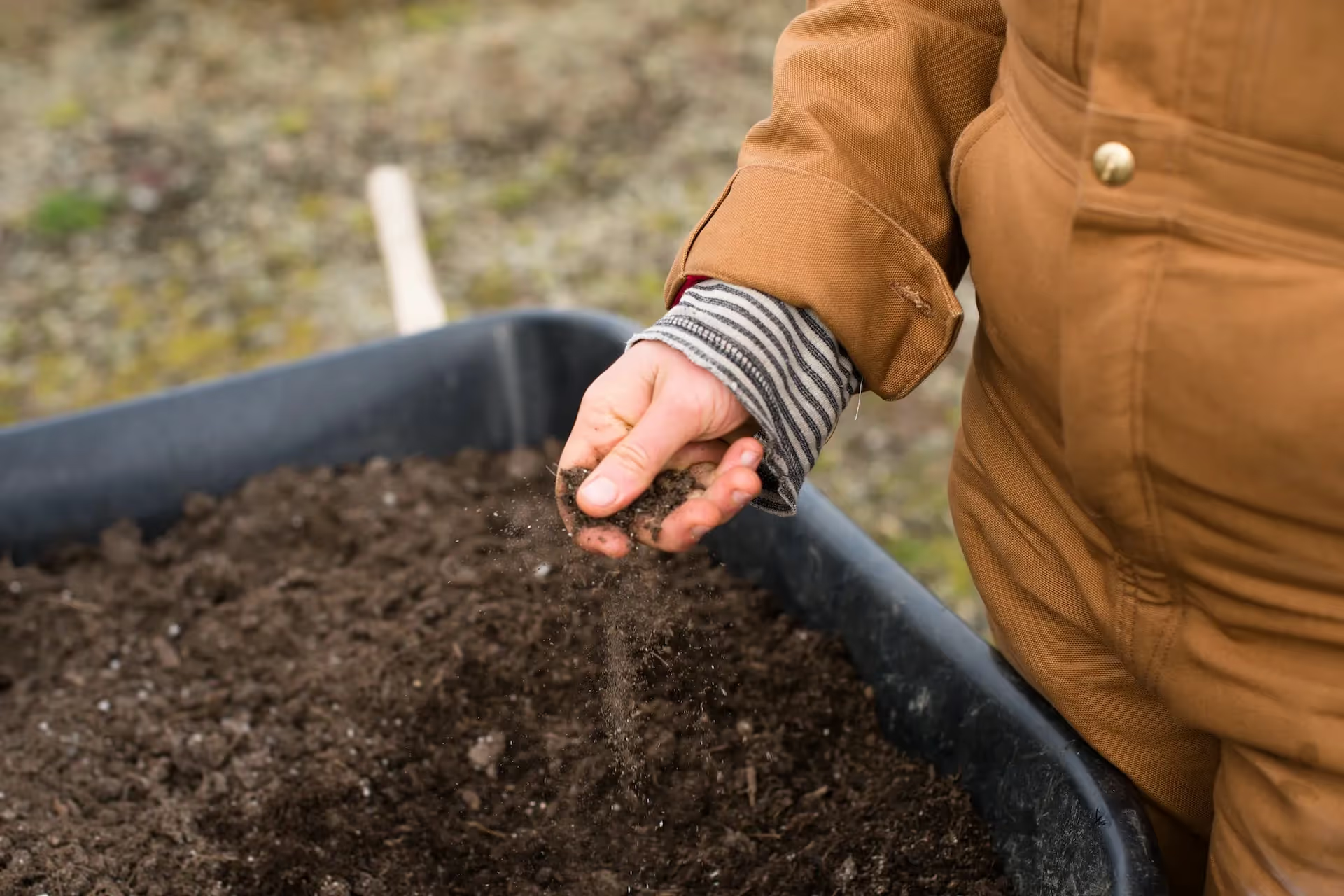
While composting is a natural process that will happen if you have your ratios, water, and aeration on track, but there are some things you can do that can help ensure compost success. It should be noted that these items are not necessary, but optional!
Compost starter, like the one sold here from gardener’s supply, is kind of like a fertilizer for your compost. In fact, if you use organic fertilizers, some of the ingredients in compost starter, such as feather meal and blood meal, will look familiar. Those materials add high value nitrogen to your pile, which is what helps kickstart your compost.
While it’s not recommended by the EPA to compost with animal carcasses, there is a practice of adding a chicken carcass to the center of your compost pile, which essentially offers the feathers, blood, bones, poultry litter, etc., to your pile. The safety issue with this is that you want to make sure your pile maintains its temperature for long enough to ensure breakdown of harmful pathogens.
You don’t need to buy anything or sacrifice a chicken to add a compost starter to your pile, however. According to Geoff Lawton, a renowned permaculture teacher, chopped comfrey or nettles can be added to the center of the pile. Urine also works, but it should come from someone who isn’t taking medication, as some medications come out through the urine and can accumulate.
While a compost tumbler or a pitchfork and a bit of sweat can turn the compost, there is a product out there called a compost aerator which helps keep a compost pile or bin aerobic without a ton of effort on your part.
Gardener’s Supply offers a sturdy compost aerator that is inserted into the compost pile, and then twisted and lifted up. This brings material from the center of the compost pile up onto the top, and mixes material in the center as well. If you repeat this several times, the pile will have received both oxygen and a good mix.
A compost thermometer is essential if you are working with livestock manure, so that you can monitor temperatures.
The thermometer is inserted into the center of the pile, and can be monitored for temperature throughout the day.
The compost process we’re outlining here is different from vermicomposting, which relies on worms.
While I haven’t added worms to my compost piles, I have noticed that they have found their way to the compost pile themselves, and tend to stay on the outer edges where it’s a little cooler than in the center of the pile.
The worms help break down the material in the compost bin, but aren’t necessary for the process to happen. The composting process actually relies on beneficial bacteria and microbes, which the worms do bring in but they are also present without the worms.
is your compost attracting rats or other vermin?
Make sure you’re not adding cooked food to your compost, and to bury any raw food scraps in the center of the pile. Keep brown material on the top of the pile, and if possible, keep the pile covered.
does your compost stink?
Try adding more brown material and make sure you are turning the pile often enough.
is your compost taking forever to break down?The EPA recommends breaking your compost down into smaller pieces. If you have a lot of large pieces of debris or even loads of whole leaves, try chopping them up next time. Leaves can be run over with a lawnmower with the bag on and dumped into the compost bin directly.
Since you're interested in composting, you may also want to check out our guide to vermicomposting, where we discuss how vermicomposting is different from traditional composting, plus what recent studies have shown about the environmental benefits of vermicomposting.
You can check out our article all the benefits of working with spent coffee grounds in the garden.